Blog
Tracking wild jaguars in Brazil’s Pantanal
In September 2015 I traveled to the Brazilian Pantanal to photograph wild jaguars. I even learned Portuguese for the occasion which ended up being a worthwhile investment (not so much with the wild jaguars).
My first stop was in Bonito (Mato Grosso do Sul) where I traveled to the Burraco das Araras to photograph red and green macaws in flight.
Burraco das Araras (Bonito/Jardim)

Arara grande vermelha (red and green macaw) in flight at the Burraco das Araras



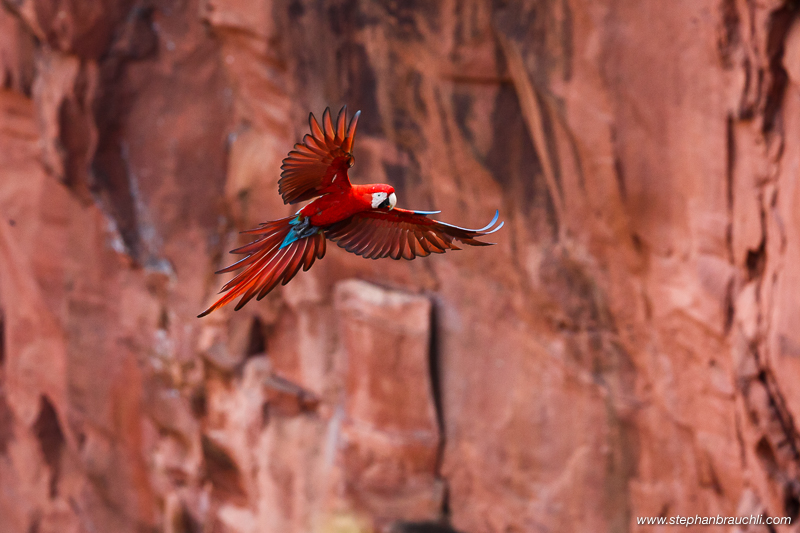






I also did a river snorkeling tour and got this image of a Dorado in it’s habitat.

I then stayed at the Pousada Aguapé, were I was hoping to photograph wild ocelots. Unfortunately, the ocelots did not show, but I got a few chances to get Toucans and other wildlife up close. The occasional wild jaguar is also sighted here, but I did not see any.
Aguapé


Cayman (Jacaré)




Tamandua – giant anteater



We then flew to Barranco Alto situated at the Rio Negro and I really enjoyed the flight in a small aircraft.
Barranco Alto


Rio negre – Barranco Alto



Exploring the rio negro by boat and kayak was a good way to get close to some of the wildlife typical for the Pantanal. I even went swimming in this coca cola colored river teaming with piranhas, cayman and other critters.It was rather safe on the sandbank, but I had to put on a t-shirt as small fish started pecking at a mole on my back and that was not very pleasant (kept thinking about what would happen if they actually were to draw blood). Just fishing in this river is a nuisance with piranhas constantly stealing the bait and cutting the line…

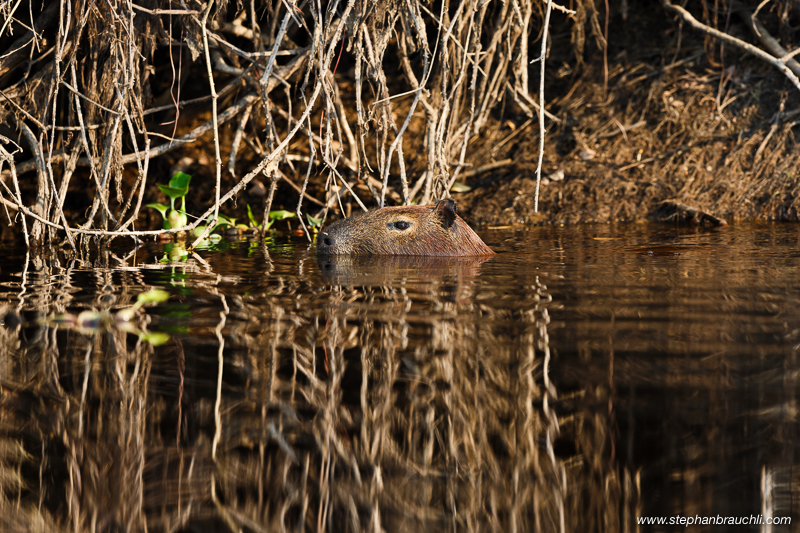

Martín pescador (Kingfisher)


Capybara








Rio negro at sunset
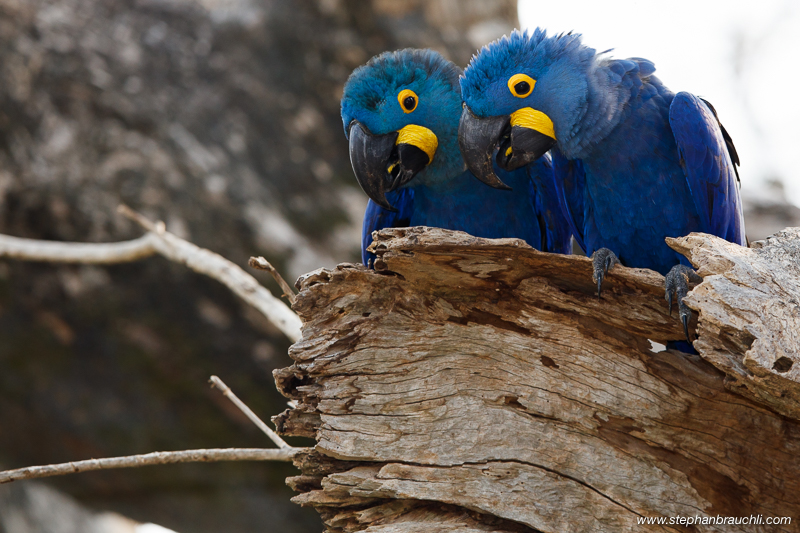
Hyacinth macaws on their nest


Ariramba

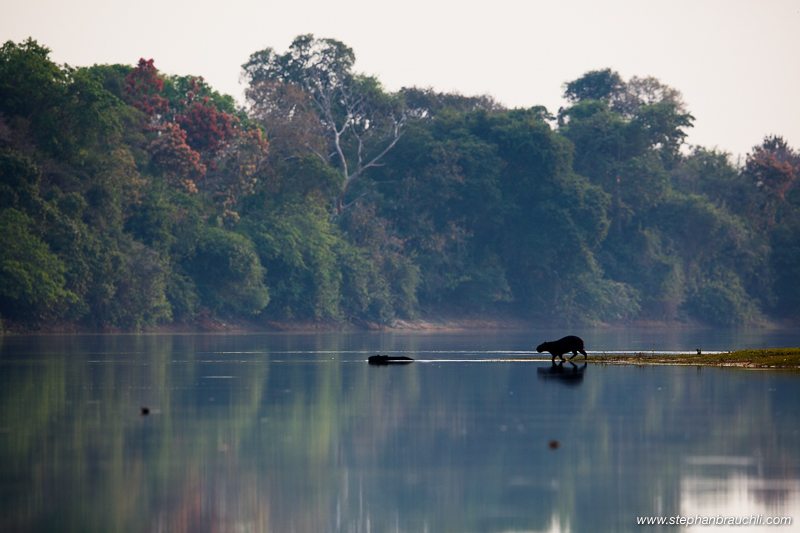








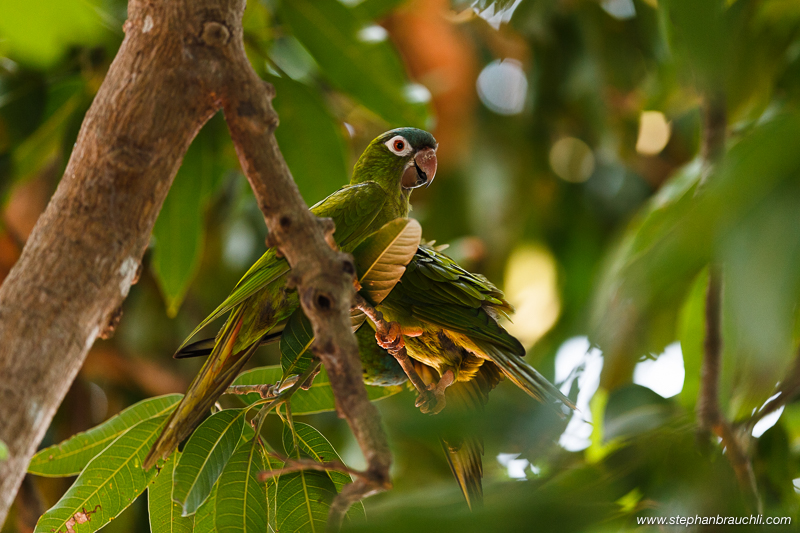
Periquito-rei (Aratinga aurea)

Scaled dove


Squirrel cuckoos (Playa cayana)

View from the Fazenda Barranco Alto

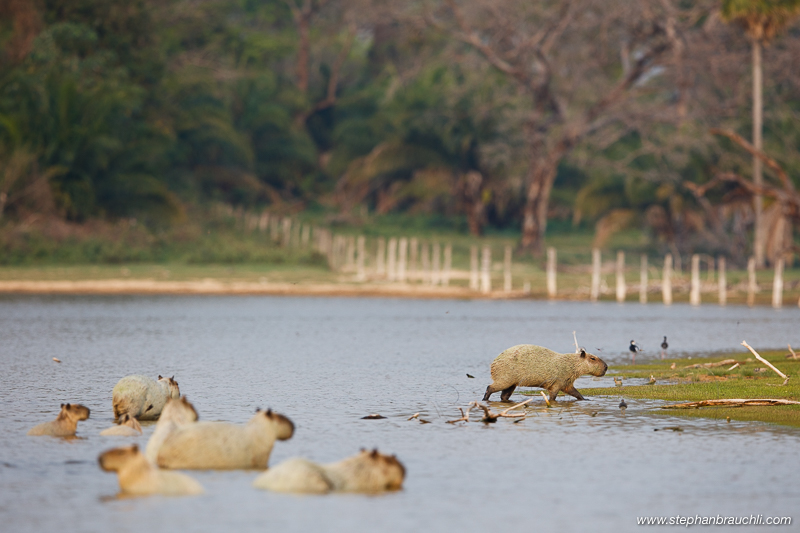

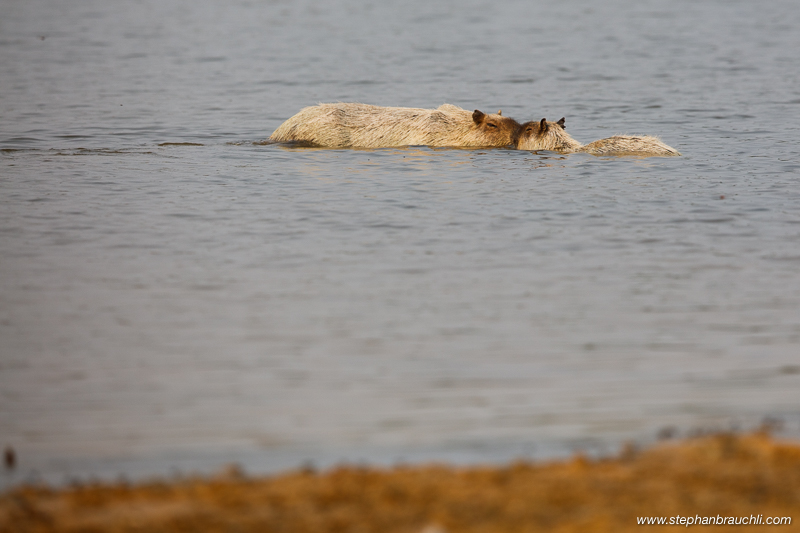
Marsh deer in velvet


Red-necked woodpecker

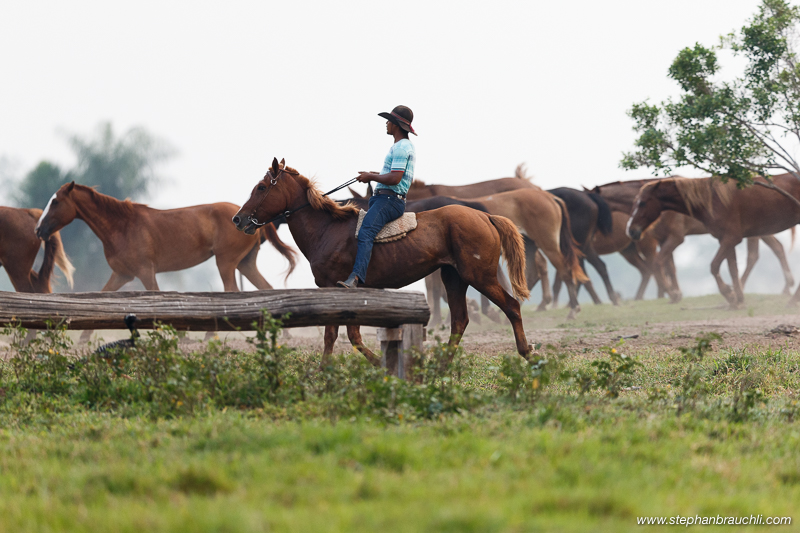

Neotropical otter

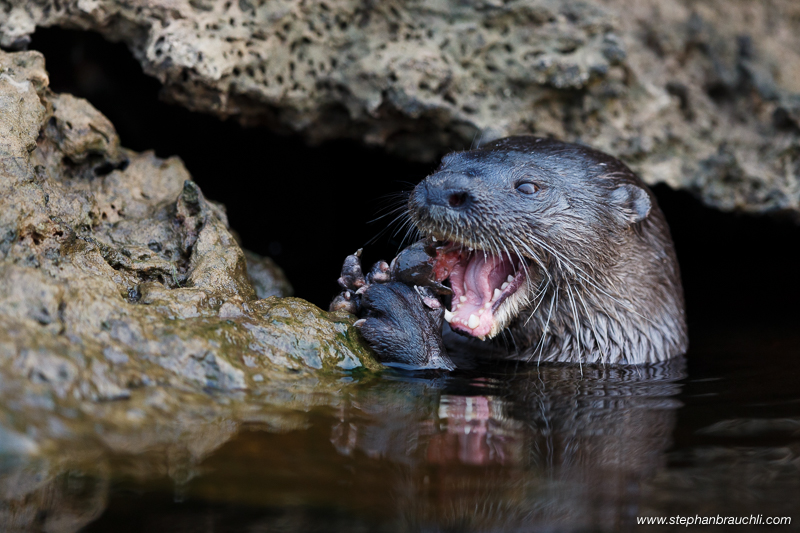




Cayman tail


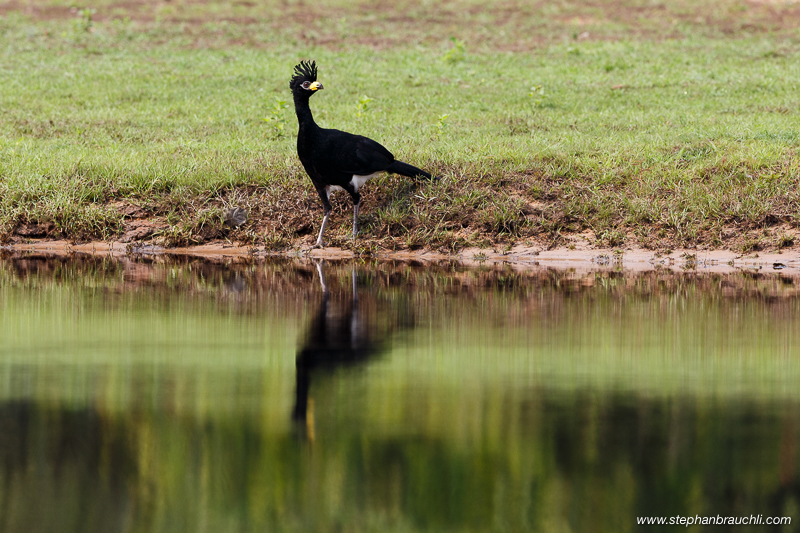
Bare-faced curassow


Tamandua with baby (giant anteater)

Peccaries

Jacana










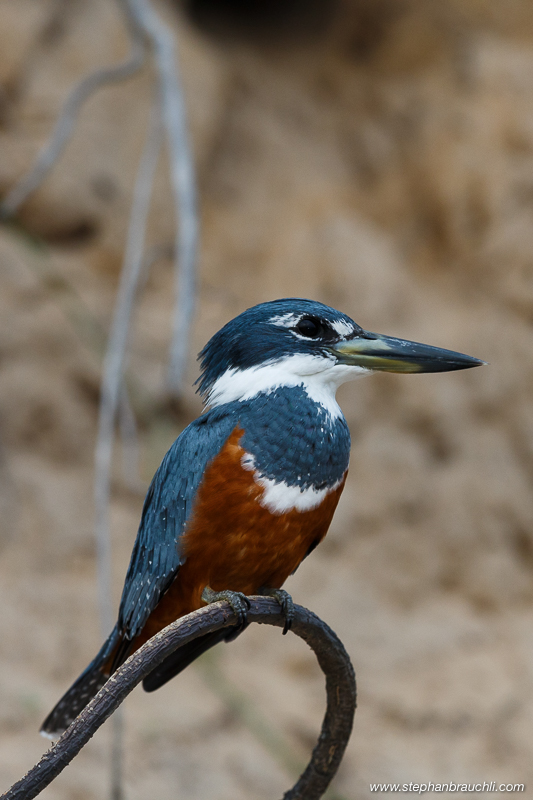

We then left the Rio Negro and flew North to Porto Jofre at the Cuiaba river.
Porto Jofre






The Cuiaba river and it’s tributaries make up probably the best place in the world to see wild jaguars as they patrol the riverbank for prey (mainly Cayman and Capybara). Doing so requires a boat and when a jaguar is sighted often all boats will gather to try to get a glimpse. This is not always done with lots of respect to the animals, as some boats get way to close making the jaguar’s prey weary and thereby disturbing the animals. Though I was surprised to see that the jaguars in general did not mind the commotion, I wish boat captains (and their clients who pay them) were more careful and respectful of the wildlife. Also, while all boats we used had 4-stroke engines, some still used the old 2-stroke outboards which are noisy and stink. When close to a jaguar, the engines are generally switched off and the driver navigates using a paddle (ideally). The antennas you see on the boats below are important as it allows the drivers to communicate with each-other about sightings. They should however fold them down when there is action as such an antenna can really mess with the autofocus tracking an animal. Many tourist who come here do not know how to behave around wildlife and speak loudly or smoke. My best encounters were when we happened on the jaguar first allowing us to enjoy it before the hordes of floating monkeys arrived. There were however also tourist and drivers who behaved correctly.

The boats have powerful engine allowing them to fly around in the river system.
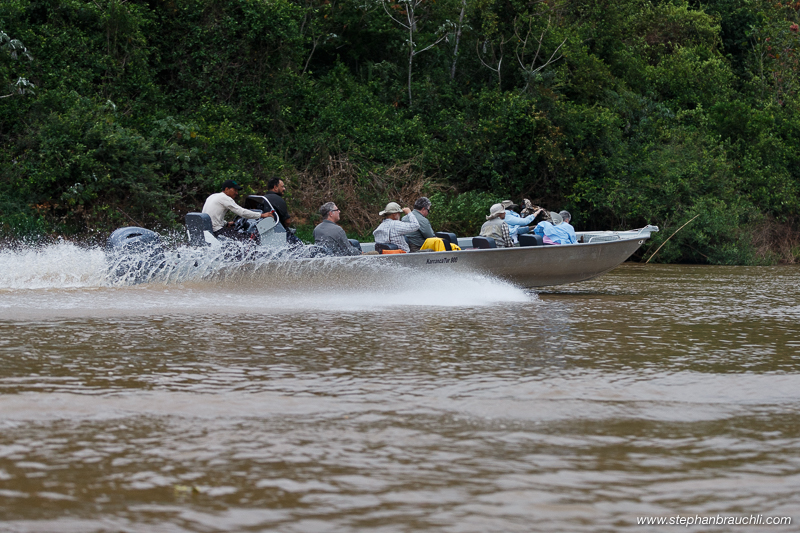
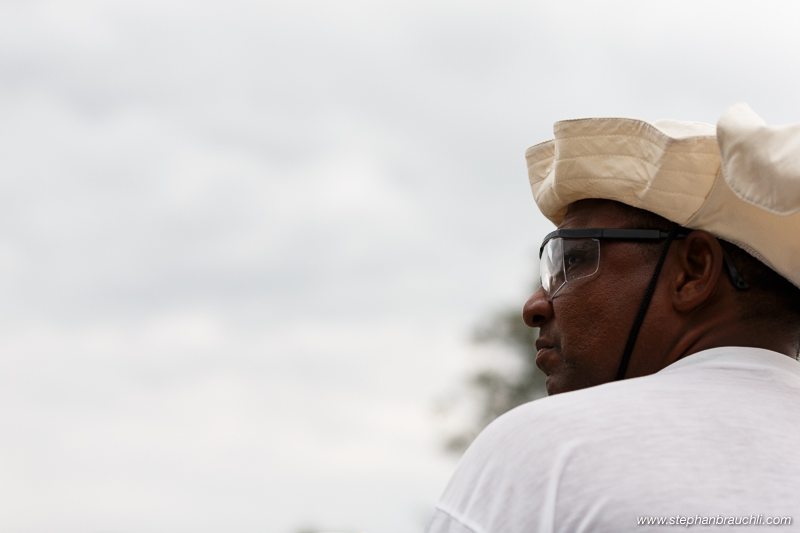
the best guide 😉
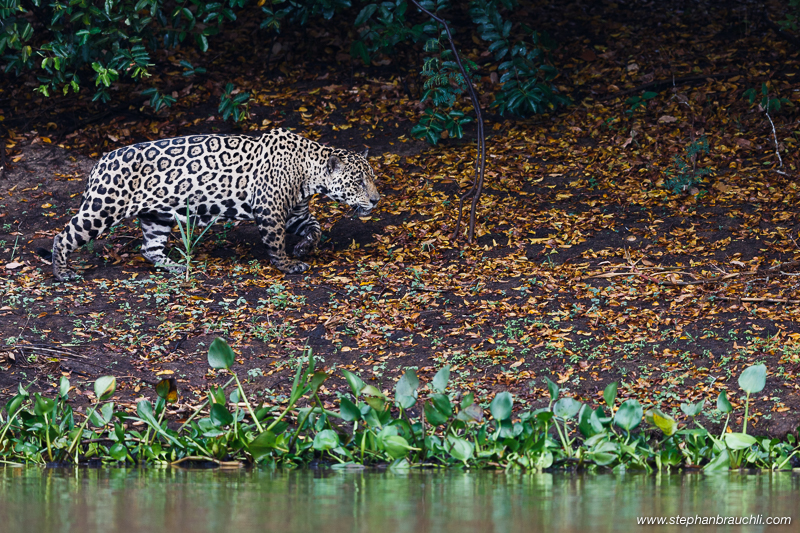
The first onça pintada (wild jaguar) sighting.





Rufescent tiger heron

Jacaré (Cayman) – Pantanal, Brazil
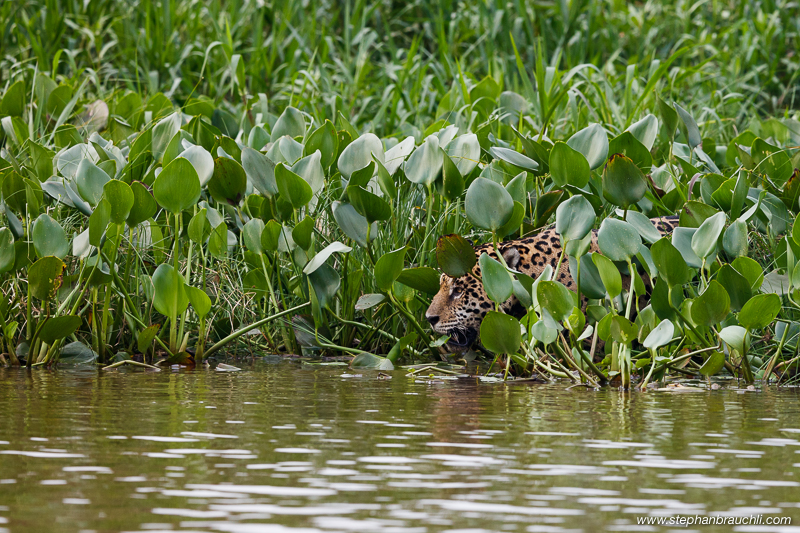
Looking for cayman to pounce on.





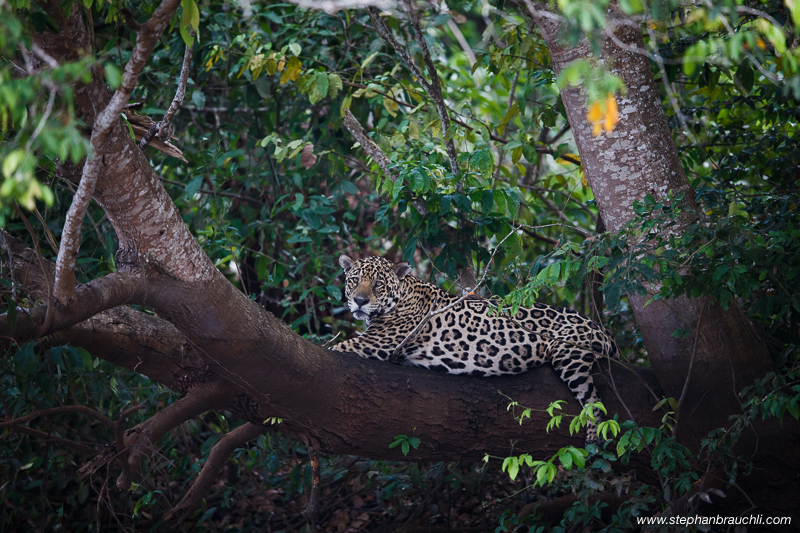




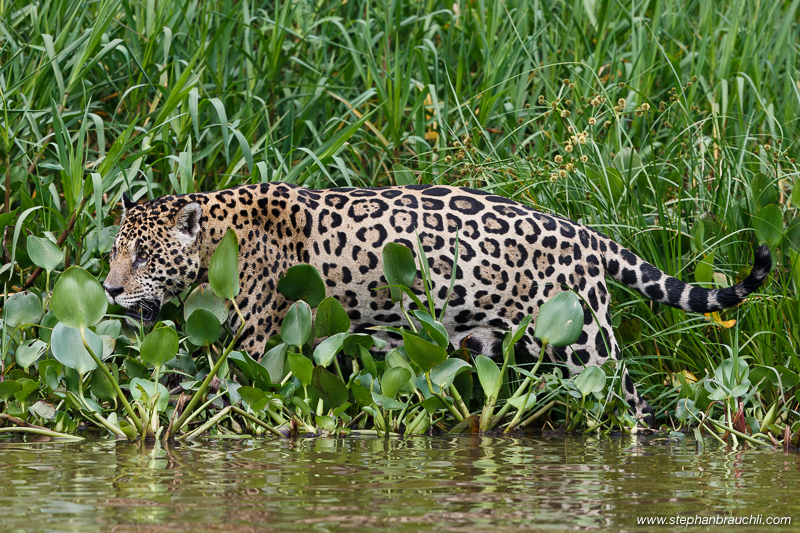


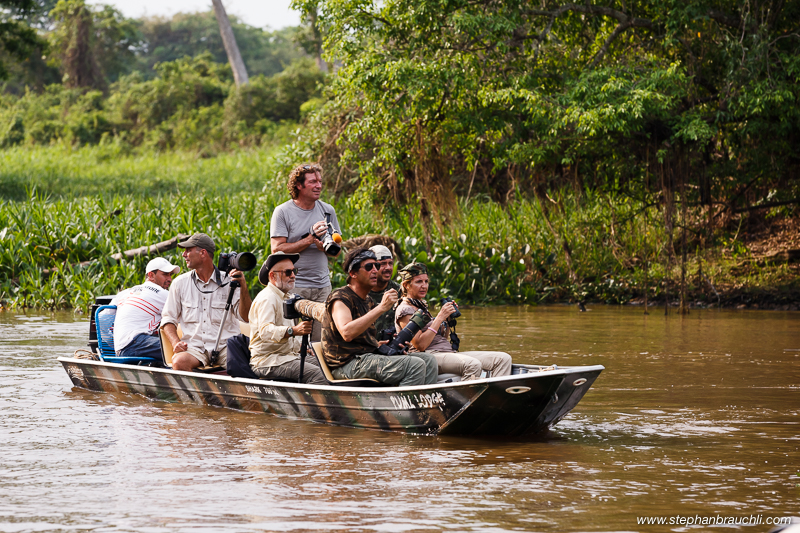


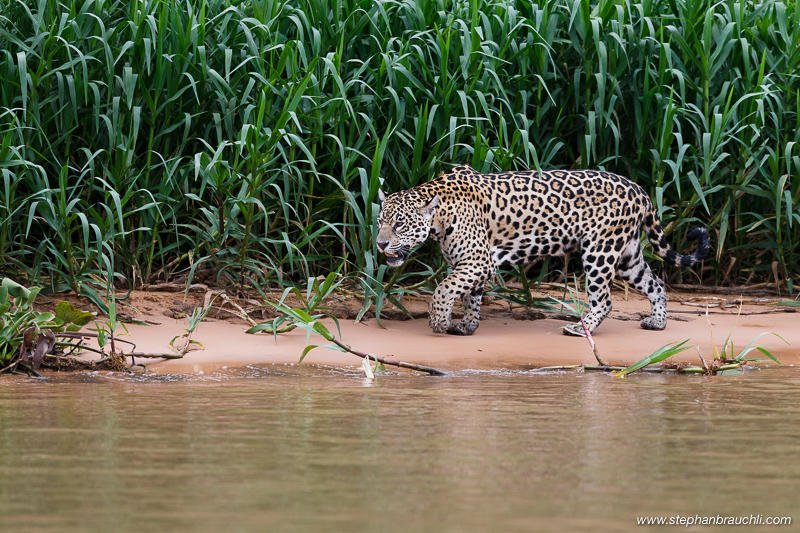






Brown howler monkey with baby

White-necked heron (Ardea cocoi)


Female jaguar

Baby giant river otter (Ariranha)

Adult giant river otter (Ariranha)

chasing a Capybara





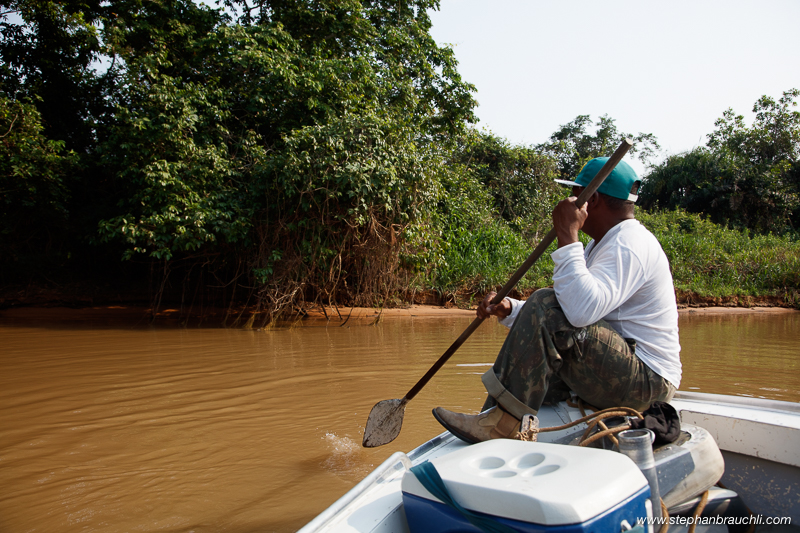






Green iguana
We then drove up the Transpantaneira a bit to get to the araras lodge where I was able to get some nice bird images from a canopy tower.
Araras Lodge

Chestnut-eared araçari

Brown capuchin monkey

Nun bird


Toucan in flight

Jabiru stork in flight
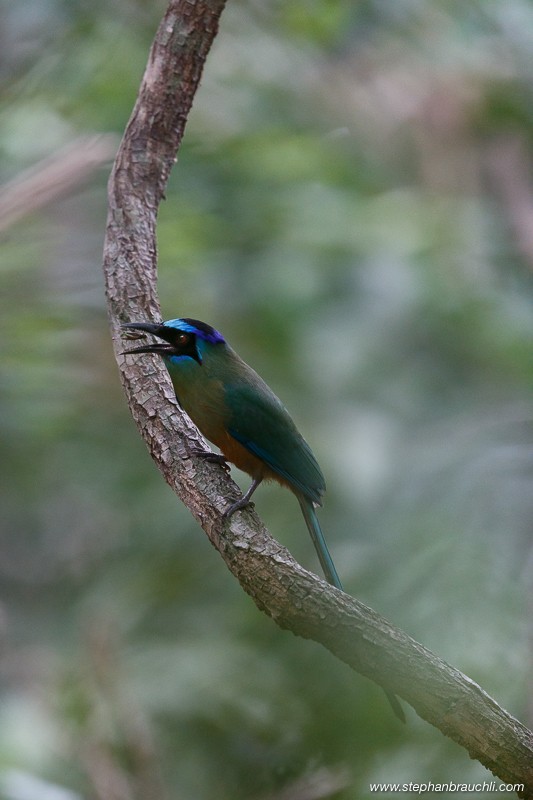
Blue-crowned motmot

Bare-faced curassow

White woodpeckers




Yellow finches





Savanna hawk

Egret


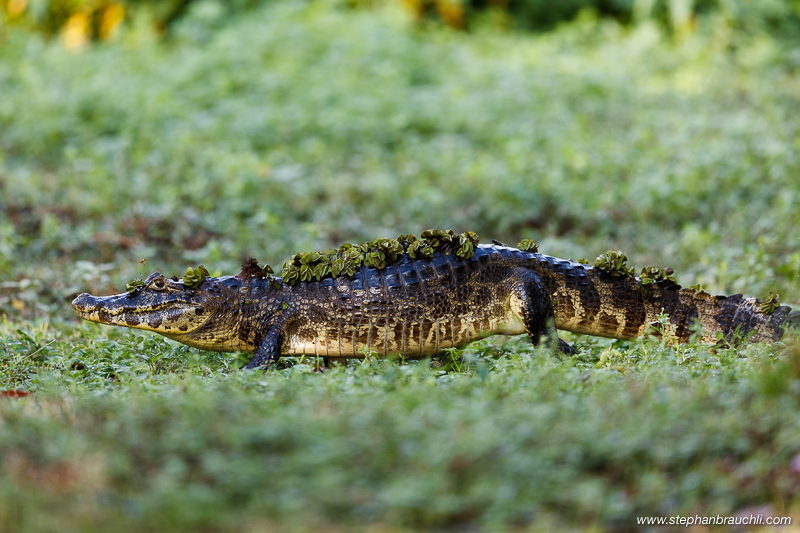

Ferruginous pygmy owl (Glaucidium brasilianum)
I hope to go back to the pantanal in the near future. I hope you enjoyed the photos. Please feel free to provide feedback.






I see you don’t monetize new.stephanbrauchli.com, don’t waste your traffic, you can earn additional bucks every month with new monetization method.
This is the best adsense alternative for any type of website
(they approve all sites), for more details simply search in gooogle: murgrabia’s tools